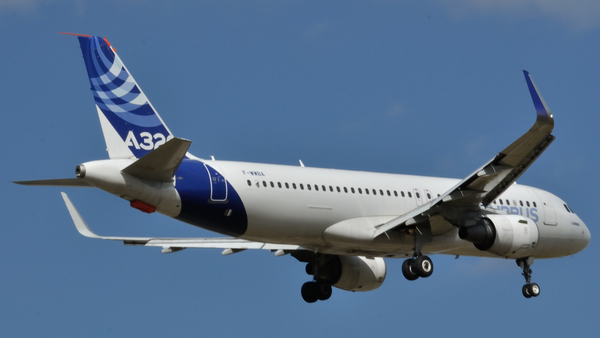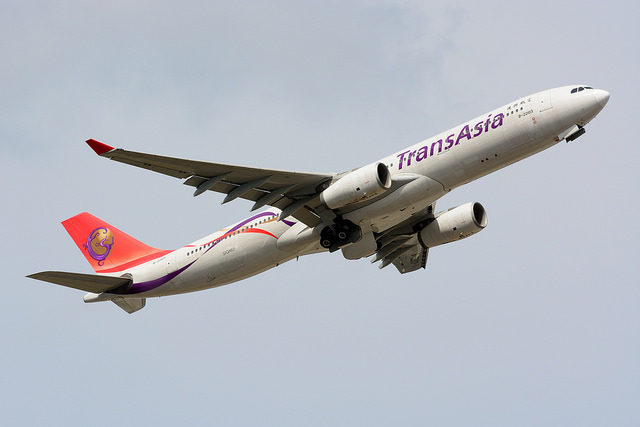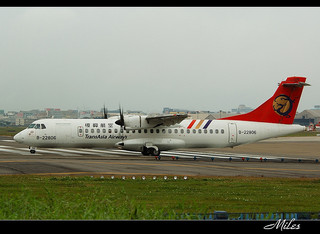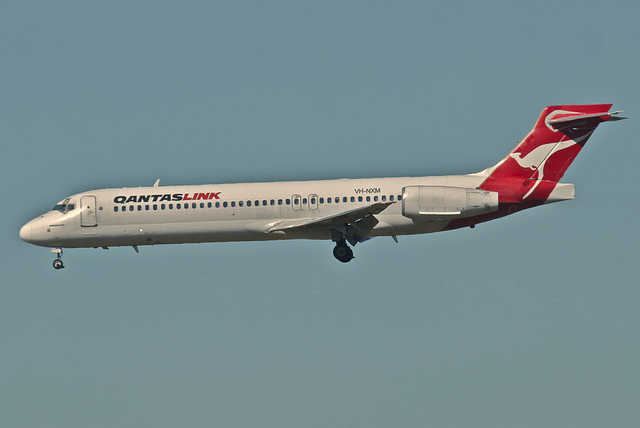Transasia AT72 at Taipei on Feb 4th 2015, right engine failed, left engine shut down, aircraft rolled sharply and lost height shortly after takeoff
Last Update: July 1, 2016 / 15:01:33 GMT/Zulu time
Incident Facts
Date of incident
Feb 4, 2014
Classification
Crash
Airline
Transasia Airways
Aircraft Registration
B-22816
Aircraft Type
ATR ATR-72-200
ICAO Type Designator
AT72
Findings Related to Probable Causes
Powerplant
- An intermittent signal discontinuity between the auto feather unit (AFU) number 2 and the torque sensor may have caused the automatic take off power control system (ATPCS):
+ Not being armed steadily during takeoff roll;
+ Being activated during initial climb which resulted in a complete ATPCS sequence including the engine number 2 autofeathering.
- The available evidence indicated the intermittent discontinuity between torque sensor and auto feather unit (AFU) number 2 was probably caused by the compromised soldering joints inside the AFU number 2.
Flight Operations
- The flight crew did not reject the take off when the automatic take off power control system ARM pushbutton did not light during the initial stages of the takeoff roll.
- TransAsia Airways did not have a clear documented company policy with associated instructions, procedures, and notices to crew for ATR72-600 operations communicating the requirement to reject the take off if the automatic take off power control system did not arm.
- Following the uncommanded autofeather of engine number 2, the flight crew failed to perform the documented failure identification procedure before executing any actions. That resulted in pilot flying’s confusion regarding the identification and nature of the actual propulsion system malfunction and he reduced power on the operative engine number 1.
- The flight crew’s non-compliance with TransAsia Airways ATR72-600 standard operating procedures - Abnormal and Emergency Procedures for an engine flame out at take off resulted in the pilot flying reducing power on and then shutting down the wrong engine.
- The loss of engine power during the initial climb and inappropriate flight control inputs by the pilot flying generated a series of stall warnings, including activation of the stick pusher. The crew did not respond to the stall warnings in a timely and effective manner.
- The loss of power from both engines was not detected and corrected by the crew in time to restart an engine. The aircraft stalled during the attempted restart at an altitude from which the aircraft could not recover from loss of control.
- Flight crew coordination, communication, and threat and error management (TEM) were less than effective, and compromised the safety of the flight. Both operating crew members failed to obtain relevant data from each other regarding the status of both engines at different points in the occurrence sequence. The pilot flying did not appropriately respond to or integrate input from the pilot monitoring.
Findings Related to Risk
Powerplant
- The engine manufacturer attempted to control intermittent continuity failures of the auto feather unit (AFU) by introducing a recommended inspection service bulletin at 12,000 flight hours to address aging issues. The two AFU failures at 1,624 flight hours and 1,206 flight hours show that causes of intermittent continuity failures of the AFU were not only related to aging but also to other previously undiscovered issues and that the inspection service bulletin implemented by the engine manufacturer to address this issue before the occurrence was not sufficiently effective. The engine manufacturer has issued a modification addressing the specific finding of this investigation. This new modification is currently implemented in all new production engines, and another service bulletin is available for retrofit.
Flight Operations
- Pilot flying’s decision to disconnect the autopilot shortly after the first master warning increased the pilot flying’s subsequent workload and reduced his capacity to assess and cope with the emergency situation.
- The omission of the required pre-take off briefing meant that the crew were not as mentally prepared as they could have been for the propulsion system malfunction they encountered after takeoff.
Airline Safety Management
- TransAsia Airways (TNA) did not follow its own procedures when selecting and training pilot flying for upgrade. The TNA’s quality assurance processes had not detected that the command selection upgrade process had been compromised.
- TransAsia Airways (TNA) did not use widely available crew resource management (CRM) guidelines to develop, implement, reinforce, and assess the effectiveness of their flight crew CRM training program.
- While the TransAsia Airways (TNA) ATR72-600 differences training program was consistent with the European Aviation Safety Agency ATR72 operational evaluation board report and compliant from a Civil Aeronautics Administration regulatory perspective, it may not have been sufficient to ensure that TNA flight crews were competent to operate the ATR72-600 under all normal procedures and a set of abnormal conditions.
- The ATR72-600 differences training records for the GE 235 flight crew showed that Captain A probably needed more training on the single engine flame out at take off procedure. That meant if the differences training records were stored, adequately maintained and evaluated by appropriate TransAsia Airways (TNA) flight operations and/or quality assurance personnel, the TNA would have had yet another opportunity to review Captain A’s ability to handle engine out emergencies.
- Captain A’s performance during the occurrence was consistent with his performance weaknesses noted during his training, including his continued difficulties in handling emergency and/or abnormal situations, including engine flame out at take off and single engine operations. However, TransAsia Airways did not effectively address the evident and imminent flight safety risk that Captain A presented.
Regulatory Oversight
- The Civil Aeronautics Administration’s (CAA) oversight of flight crew training, including crew resource management (CRM) training, is in need of improvement.
- The systemic TransAsia Airways (TNA) flight crew non-compliances with standard operating procedures identified in previous investigations, including GE 222, remained unaddressed at the time of the GE235 occurrence. Although the Civil Aeronautics Administration (CAA) had conducted a special audit after the GE 222 accident which identified the standard operating procedures compliance issue, the CAA did not ensured that TNA responded to previously identified systemic safety issues in a timely manner to minimize the potential risk.
Other Findings
- The flight crew were certificated and qualified in accordance with Civil Aeronautics Administration (CAA) regulations and company requirements. There was no evidence to indicate that the flight crew’s performance might have been adversely affected by pre-existing medical conditions, fatigue, medication, other drugs or alcohol during the occurrence flight.
- Visual meteorological conditions (VMC) prevailed at the time of the aircraft’s departure. No adverse weather conditions were present for the flight.
- The aircraft’s certificate of airworthiness and registration were current at the time of the occurrence. The occurrence aircraft was dispatched at Songshan Airport with no known defects and was in compliance with all applicable airworthiness directives and service bulletins. A review of the aircraft’s maintenance records before the occurrence flight revealed that there were no defects reported that related to engine number 2 automatic feathering system.
- Flight crew transferred from conventional flight instruments to a more advanced avionic suite with primary flight display, the visual pattern and information picked up by the crew in an emergency situation may not be retrieved at the same location with the same display.
- Although the influence of the flight director indication was not demonstrated in the occurrence flight and the logics of ATR flight director bars are consistent with other aircraft types within the industry, the simulator flight illustrated the flight director bars indication during stall warning were in contradiction with the automatic stall protection inputs and thus may disturb the crew.
- The ATR72 formal document has no general statement of rejecting take off policy and procedure of rejecting take off with both engines operative.
Five safety recommendations were released to the airline, four to Taiwan's Civil Aeronautics Administration, two to the engine manufacturer, two to the aircraft manufacturer and three to the European Aviation Safety Agency.
The ASC summarized the analysis in their executive summary:
Had the crew prioritized their actions to stabilize the aircraft flight path, correctly identify the propulsion system malfunction which was the engine number 2 loss of thrust and then take actions in accordance with procedure of engine number 2 flame out at take off, the occurrence could have been prevented. The investigation report identified a range of contributing and other safety factors relating to the engine’s auto feather unit, crew of the aircraft, TransAsia’s flight operations and management processes, and the regulatory oversight of TransAsia by the Civil Aeronautics Administration (CAA).
Incident Facts
Date of incident
Feb 4, 2014
Classification
Crash
Airline
Transasia Airways
Aircraft Registration
B-22816
Aircraft Type
ATR ATR-72-200
ICAO Type Designator
AT72
This article is published under license from Avherald.com. © of text by Avherald.com.
Article source
You can read 2 more free articles without a subscription.
Subscribe now and continue reading without any limits!
Read unlimited articles and receive our daily update briefing. Gain better insights into what is happening in commercial aviation safety.
Send tip
Support AeroInside by sending a small tip amount.
Related articles
TransAsia A320 enroute on Jul 24th 2016, scorching water
A Transasia Airbus A320-200, registration B-22317 performing flight GE-367 from Taichung (Taiwan) to Macau (China) with 99 passengers and 8 crew, was…
TransAsia A333 at Taipei on Jul 16th 2016, could not fully retract landing gear
A TransAsia Airbus A330-300, registration B-22103 performing flight GE-606 from Taipei (Taiwan) to Tokyo Narita (Japan) with 171 people on board, was…
Transasia AT72 at Makung on Jul 23rd 2014, impacted buildings on approach
On Jan 29th 2016 the ASC released their final report, the first time ever in English (requiring some praise), concluding the probable causes of the…
Transasia AT72 near Makung on Sep 8th 2015, engine shut down in flight
A Transasia Avions de Transport Regional ATR-72-500, registration B-22811 performing flight GE-505 from Taipei Songshan to Makung (Taiwan) with 22…
Transasia AT72 near Taipei on May 21st 2015, engine failure
A Transasia Airways Avions de Transport Regional ATR-72-212A (-500), registration B-22806 performing flight GE-5042 from Makung to Taipei Songshan…
Newest articles
National System B712 at Hobart on Jun 6th 2023, flight crew nearly incapacitated after chlorine like smell on flight deck
A National Jet Systems Boeing 717-200 on behalf of Qantas, registration VH-NXM performing flight QF-1541 from Sydney,NS to Hobart,TA (Australia), was…
Zagros MD83 at Queshm on Dec 30th 2023, approached wrong airport
A Zagros Airlines McDonnell Douglas MD-83, registration EP-ZAQ performing flight ZO-4035 from Tehran Mehrabad to Queshm (Iran) with 127 passengers…
Subscribe today
Are you researching aviation incidents? Get access to AeroInside Insights, unlimited read access and receive the daily newsletter.
Pick your plan and subscribePartner

A new way to document and demonstrate airworthiness compliance and aircraft value. Find out more.

ELITE Simulation Solutions is a leading global provider of Flight Simulation Training Devices, IFR training software as well as flight controls and related services. Find out more.

Your regulation partner, specialists in aviation safety and compliance; providing training, auditing, and consultancy services. Find out more.
AeroInside Blog
Popular aircraft
Airbus A320Boeing 737-800
Boeing 737-800 MAX
Popular airlines
American AirlinesUnited
Delta
Air Canada
Lufthansa
British Airways



